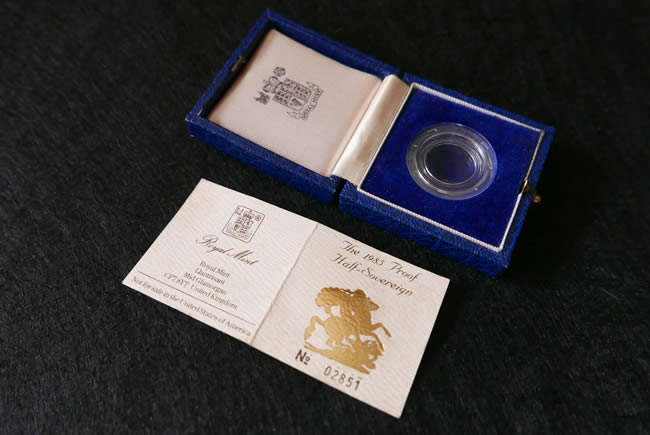You may have come across an old book or document that is peppered with yellow spots. These unsightly stains are caused by the growth of fungi or mildew, usually because the item has been exposed to prolonged moisture or humidity. The technical term for this is foxing, and today we will be exploring a method to remove yellow spots from paper.
Foxing is commonly encountered on the pages of old books, paintings, certificates, documents and generally on most printed material that has been stored away for some time. If left on shelves and drawers in less than ideal indoor air quality conditions, yellow or rust-coloured spots and stains tend to form over time.
Interestingly, the term foxing has nothing to do with the animal. It is derived from the chemical term for rust, which is iron oxide or Ferric OXide in Latin. One can quickly see where FOX comes from and how it is associated with the rust-coloured stains on old paper and fabric.
Today we will attempt to remove foxing spots from an old certificate and fabric. Seen here are a box and paper certificate from the Royal Mint for a 1985 half sovereign gold coin.
The foxing stains are clearly visible, more so on the paper than on the fabric in the box.
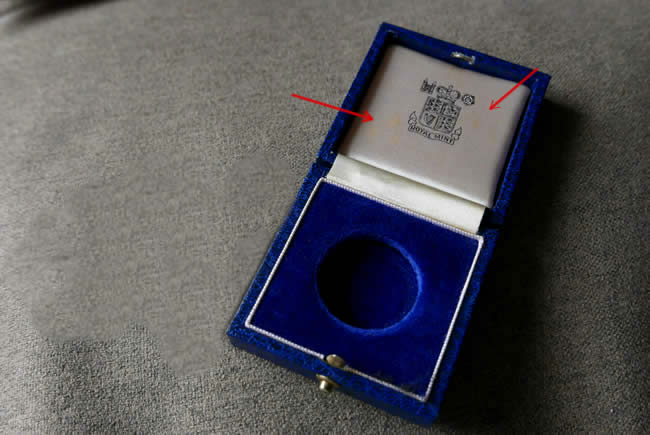
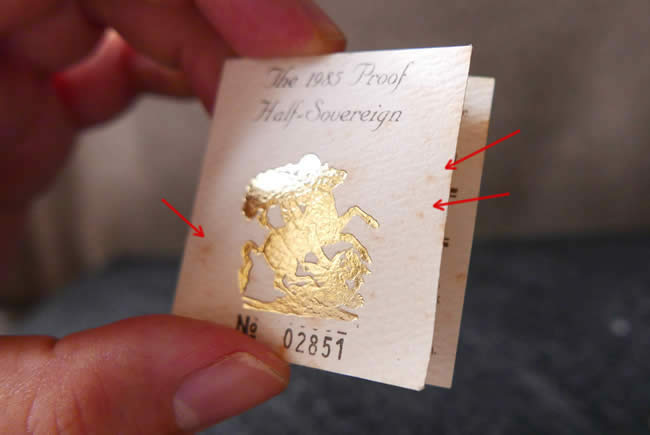
Preparations
For this task, we will need:
- hydrogen peroxide (6% pharmaceutical grade H2O2 solution is ideal)
- Q-tips/cotton bud (optional)
- facial cotton
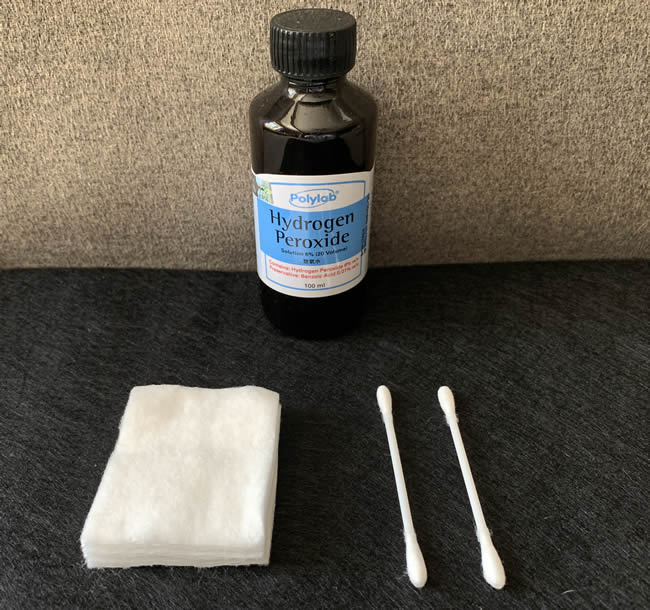
Do not use a high-concentration solution as hydrogen peroxide is a strong oxidising agent and the bleaching effect may do irreparable damage to your item. If your item is delicate and you prefer to do it at a more gradual pace, you could dilute your hydrogen peroxide with distilled water.
To be on the safe side, you can consider using food grade hydrogen peroxide solution. Try to avoid any with an acidic content if you can. In the one used below, the solution contains a very minute amount (0.01% w/v) of benzoic acid as preservative and it worked fine.
Having said that, if you’re working on any valuable item or document of significant historical importance, the removal of foxing stains and the restoration of such artefacts should be done by a professional.
If you’ve got the items above ready, let’s proceed!
How to Remove Yellow Spots (Foxing Stains)
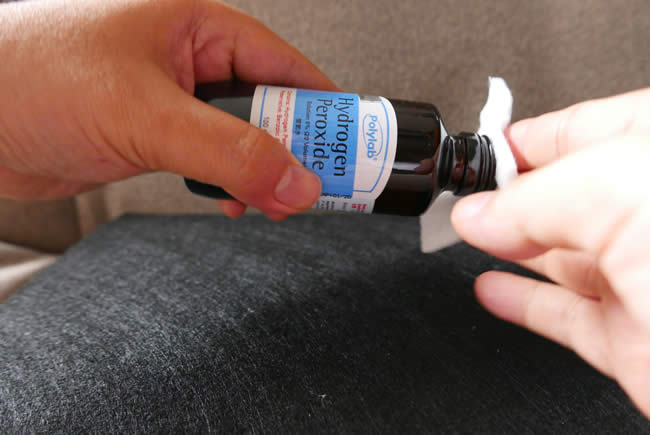
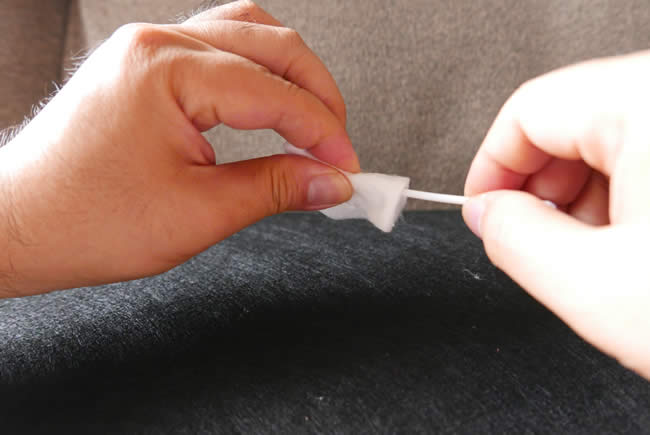
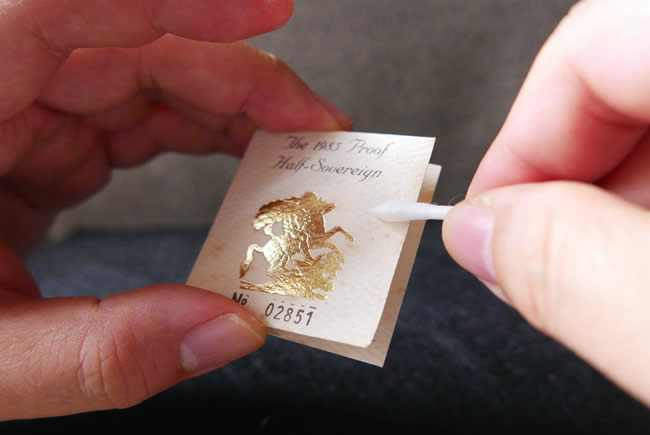
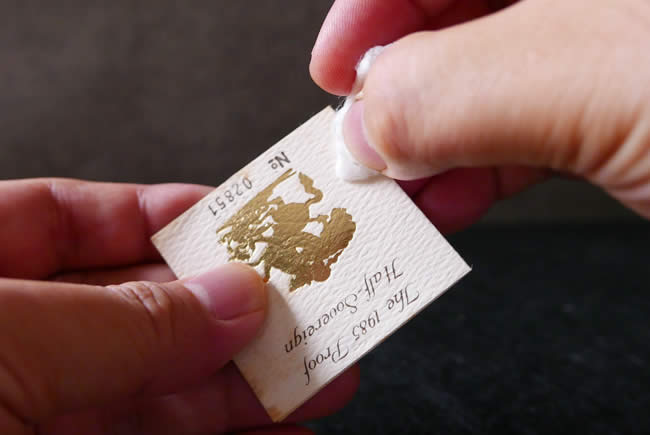
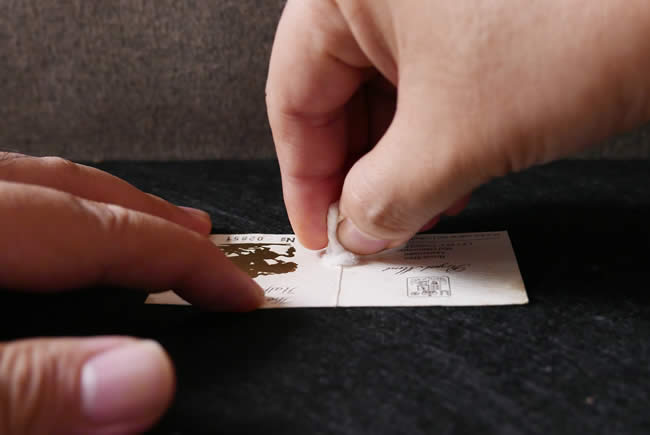
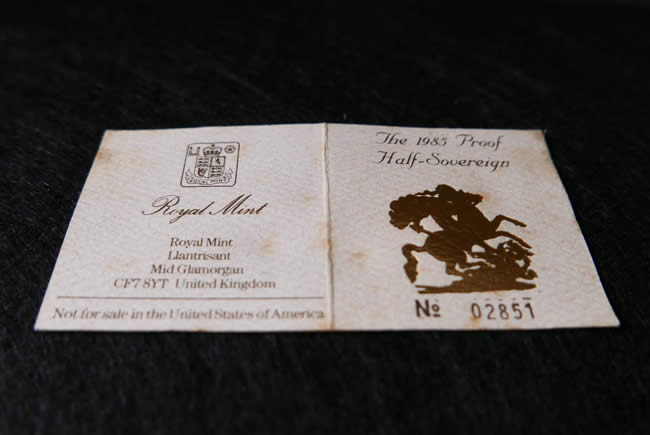
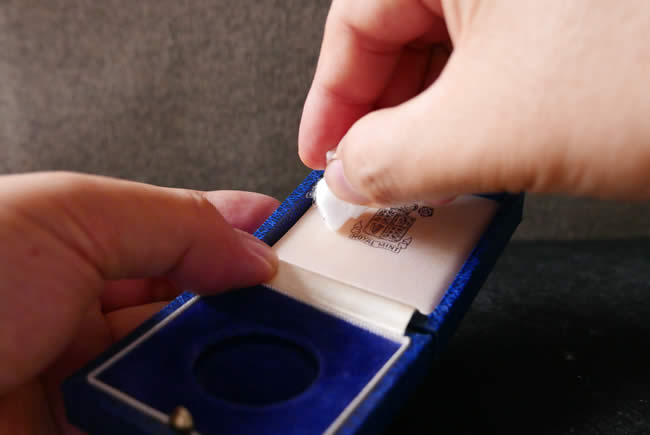
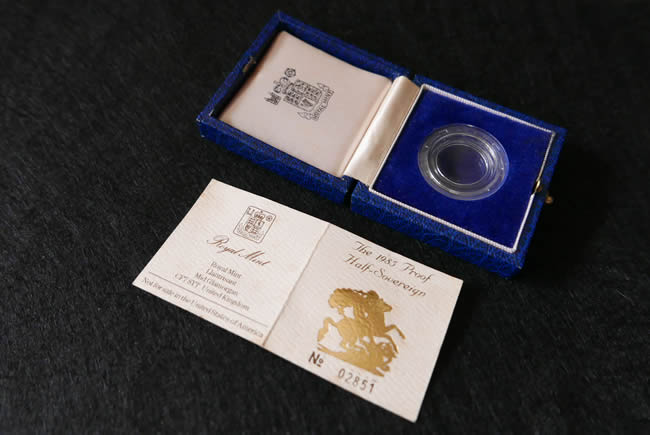
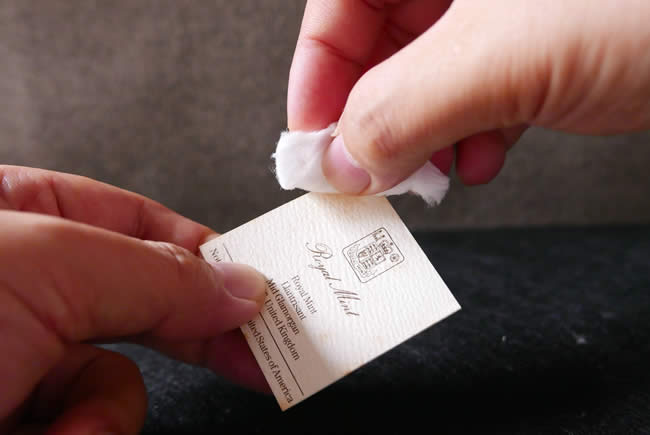
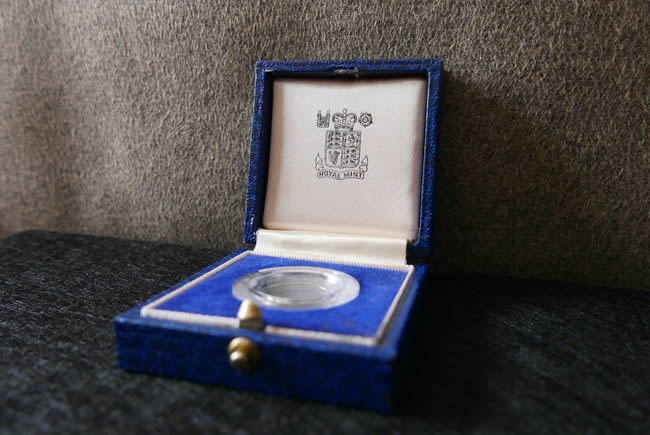
End Results
The result after just 2 rounds of dabbing was already quite noticeable. I found that using the facial cotton to dab was actually more effective than using the Q-tip, although for very small areas, the Q-tip works just as well.
I did a total of about 8 rounds of dabbing and drying for the certificate card. The difference between the before and after is as shown in the photos below:
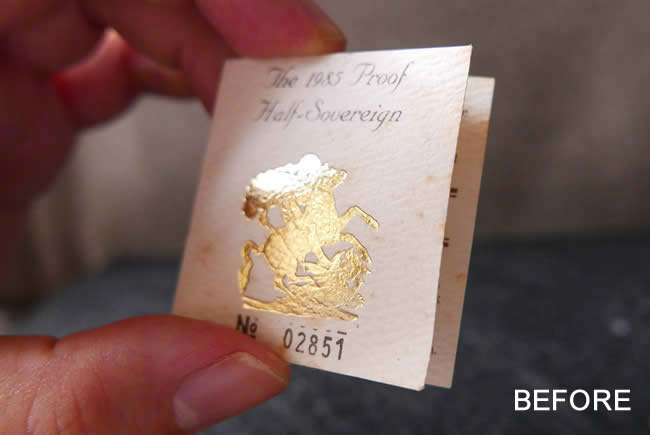
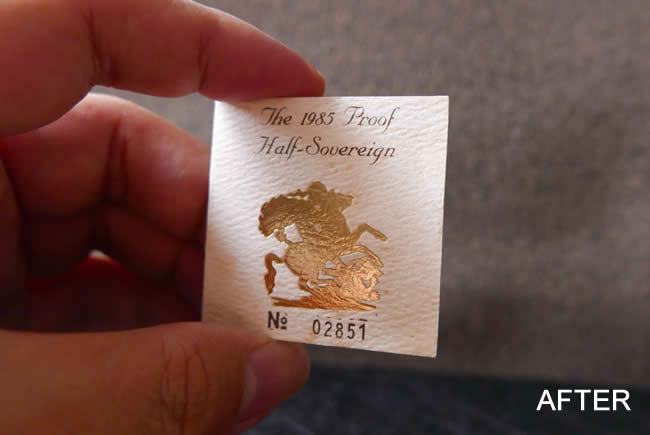
The key things to remember with using the above method are:
- The applicator (facial cotton or Q-tip) should not be oversaturated with the hydrogen peroxide solution especially when working with paper media (certificates, documents etc) – overdampening will likely damage or warp the media beyond repair.
- Exercise caution when using the rubbing motion with the Q-tip on paper as friction and moisture could remove fibres from the paper media and cause irreparable damage.
- Be wary of where the hydrogen peroxide solution is applied – avoid contact with coloured or printed areas of the document to prevent obliteration.
If you have attempted to remove foxing stains using the method above, hopefully it has worked well for you. Do share your experience with other readers if you have a different or even better way of doing it.
